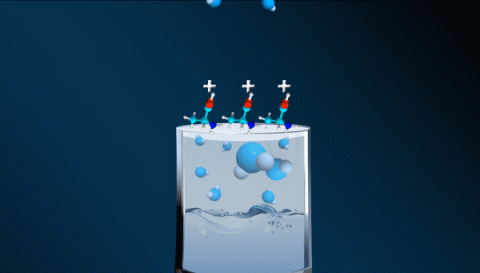Israeli-American Group Invents Breakthrough Way to Really Clean Viruses From Wastewater
"It works," Prof. Moshe Herzberg of Ben-Gurion University of the Negev told Haaretz. The invention by the scientists is still basic science, not product, he clarifies: "We are at the stage of proof of concept," he explained. Taking the idea forward, making a product and commercializing it is the next stage. The eventual economic feasibility is therefore unclear, but the concept is intriguing. Desalination has been an increasingly touted solution to thirsty cities, at least ones reasonably near the coast, but downsides of its broad and long-term use are starting to come to the fore.
Current membrane technologies to filter pathogens from wastewater require either added chemicals such as chlorine, which can contaminate the environment or are energy-intensive. (Also, chlorine doesn't kill all bacteria or knock out all viruses.) Researchers at the University of Illinois at Urbana-Champaign and Ben-Gurion University collaborated on the new ultrafiltration approach, which was published in the current issue of Water Research.
A problem with filtering viruses out of anything is that they are very small, ranging from about 20 to 400 nanometers in diameter. (Twenty nanometers is about the equivalent of 40 silicon atoms.)
"We began with a bacteria membrane and improved it for viruses as well. Our idea is to show that one can take a membrane and use it to clean out viruses," says Herzberg. Herzberg and the group grafted a novel hydrogel coating onto a commercial ultrafiltration membrane. "We at Ben-Gurion did the chemistry, creating the hydrogel. They did the work with the viruses. Together we connected our hydrogel in the membrane and their know-how of virus detection. We took their microbiology and our surface chemistry and connected it," Herzberg says.
The zwitterionic polymer hydrogel, as they call it, repels the viruses from approaching and passing through the membrane, or building up on it. The group says it achieved a significantly higher rate of removal of waterborne viruses, including human norovirus and adenovirus, which are commonly found in U.S. drinking water sources – including in the Great Lakes – and worldwide, says the team. At this stage, the scientists have proved the hydrogel concept with adenovirus and norovirus. Will it work with viruses in general? "Adenovirus is at the small end of the scale, at 20 nanometers, and it succeeded," Herzberg says. "We achieved physical repulsion. It should work on bigger viruses too."
Norovirus is estimated to be the second leading cause of gastroenteritis-associated mortality, say the researchers. Adenoviruses cause a range of diseases, from the common cold to bronchitis and pneumonia, diarrhea, conjunctivitis, cystitis, gastroenteritis and neurological disease.
It's still too early to start searching for potential partners for product development and commercialization, but in the future, the technology could be a boon for water-scarce cities in the era of climate change, which is marked by accelerated desertification in some areas, including the Middle East and, already, parts of Israel.
Ruth Schuster

